Urban Vision for Manifesta 14 Prishtina
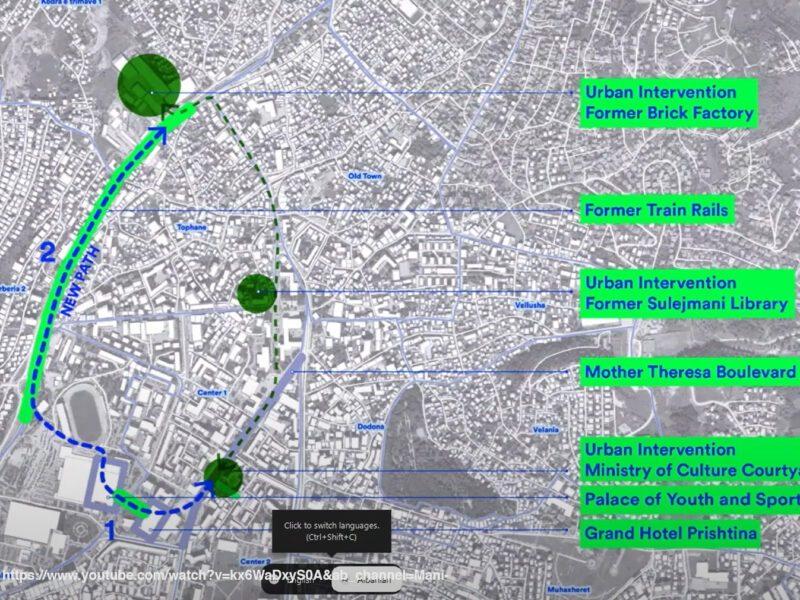

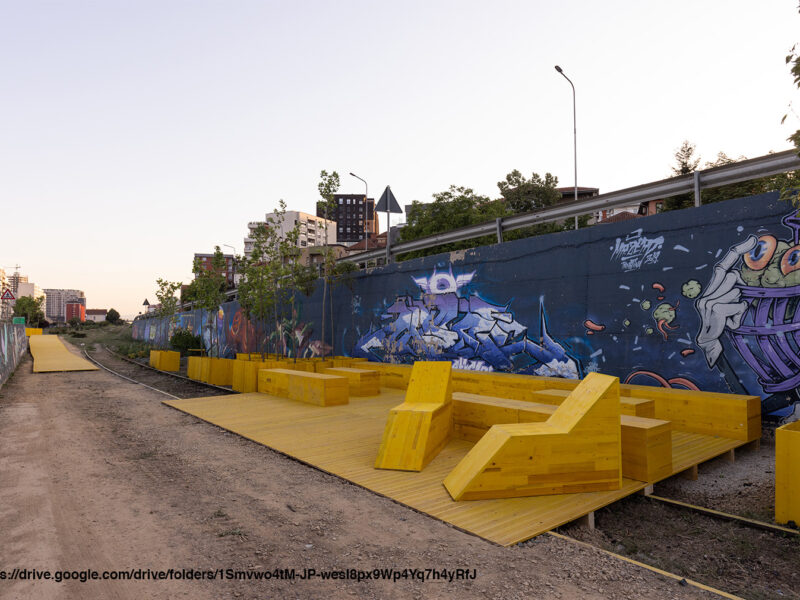
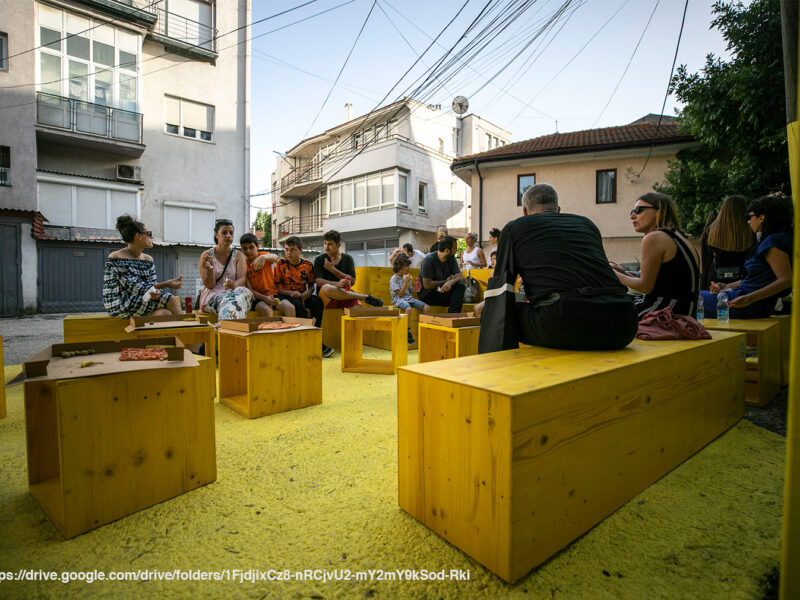
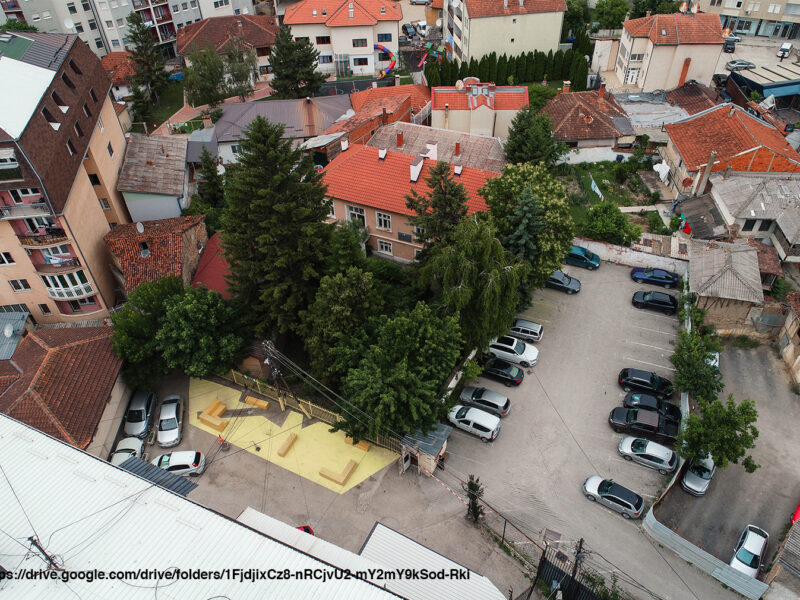

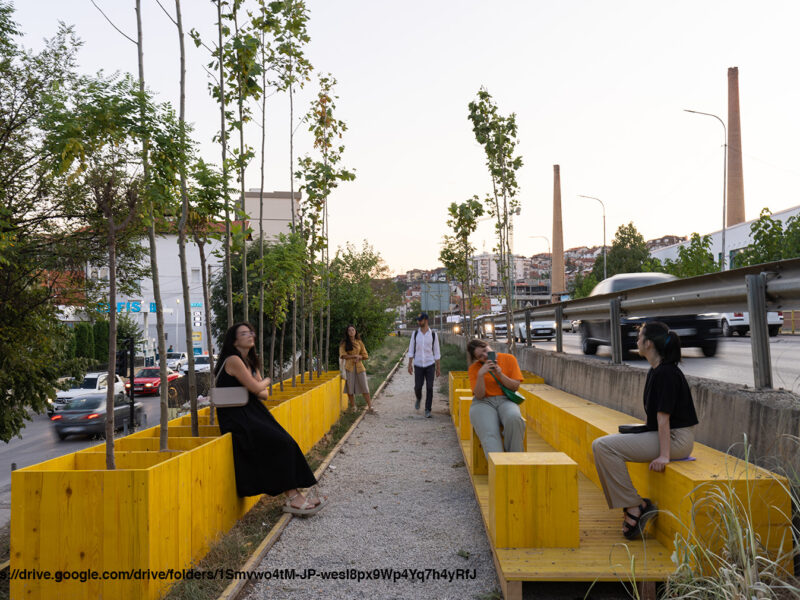
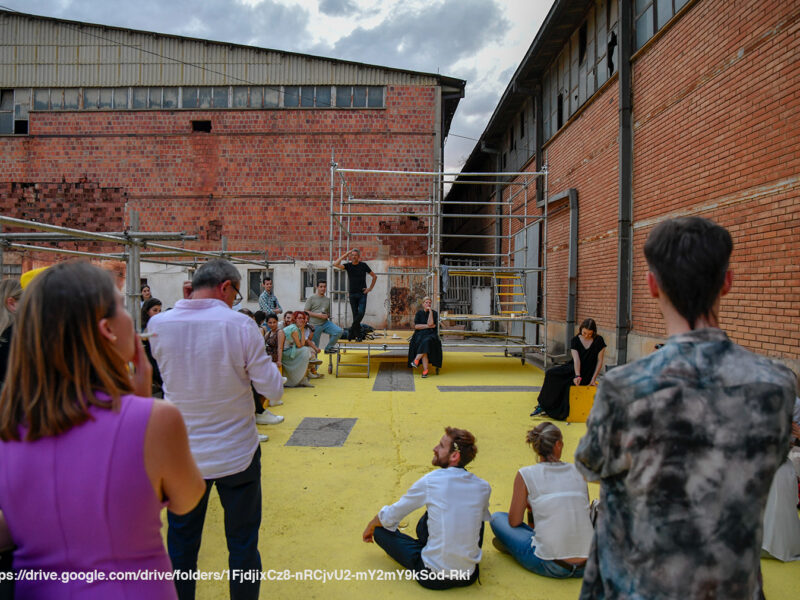

autorský popis projektu
zdroj: https://carloratti.com/project/urban-vision-for-manifesta-14-prishtina/
International design and innovation office CRA-Carlo Ratti Associati unveils the result of its Urban Vision and Urban Program for Manifesta 14, the European Nomadic Biennial taking place in Prishtina, Kosovo between July 22 and October 30, 2022. CRA’s project suggests a new methodology to reclaim public space in the city, starting with a series of temporary, open-ended design interventions and leveraging artificial intelligence for urban analysis. CRA’s Urban Vision, titled Commons Sense, casts citizens as key drivers of the evolution of the built environment, fostering feedback loops to effect long-term urban innovation.
During the 20th century, regime changes and political clashes brought considerable turbulence to Kosovo and its cities. As a result, Prishtina currently suffers from a substantial shortage of public space. A large group of disenfranchised local residents are eager to reverse this situation, described by the city’s former mayor Shpend Ahmeti as an ongoing “battle for public space”.
In response to this situation, CRA and Manifesta 14 put forward an innovative methodology for inclusive urban innovation, whose initial results will be visible in Prishtina during the biennial. This experimental “open-source urbanism” methodology is based on a series of temporary to permanent interventions developed with a participatory approach based on citizen feedback.
First, CRA mapped the city and identified a wide range of socially and culturally significant sites. Despite many of them being in compromised conditions, these locations have the potential to trigger an urban renaissance. In this phase, the studio teamed up with MIT Senseable City Lab to use artificial intelligence analysis to form a digital streetscape of the city. The findings were subsequently realized in collaboration with students from the architecture faculty of the University of Prishtina. The related data can be accessed on request by researchers, in the spirit of open-source urbanism.
Second, temporary renovations, or Urban Interventions, were set up to demonstrate how the same locations can be reclaimed by and for Prishtina’s citizens. Such work was conducted at a low cost in a short period of time, with a clear speculative orientation. Then, local residents were invited to “vote with their feet”, deciding whether these interventions should be made permanent, or be modified or discarded. Finally, evaluation sessions will be held to facilitate the accelerated evolution of the city.
“Cities around the world are currently going through an extraordinary time marked by crises, but also potential for renaissance. Faced with an unprecedented situation during the first outbreak of the Covid-19 pandemic, local government officials were forced to make bold urban experiments to respond more efficiently to people’s needs,” says Carlo Ratti, founding partner of CRA and director of the MIT Senseable City Lab. “Due to its history and social makeup, Prishtina is one of Europe’s most promising ‘living labs’. Our Urban Vision for Manifesta 14 strives to channel the city’s collective energy into accelerating its evolution. We are grateful to Manifesta 14’s director Hedwig Fijen, the Municipality of Prishtina and mayor Përparim Rama for this fruitful collaboration.”
“Commons Sense advocates for the Commons as the key for any positive transformation of the built environment. Working with local associations, students, and citizens, we have been experimenting with a rapid, participatory approach to reclaim the public space. It is the first step of a wider process of urban change and inclusion that we call the Prishtina Model,” says Daniele Belleri, partner at CRA in charge of curatorial projects.
Such methodology was applied to build the Green Corridor. This 1.3-kilometer former railway track, which used to be filled with abandoned cars and trash, has now been transformed into a pedestrian path with seating and plants. In addition, it links up two main locations of Manifesta 14: the Palace of Youth and Sports and the Brick Factory. The walkway addresses the debate about how to remedy Prishtina’s problem of low pedestrian accessibility, and provides a leisure space for residents and exhibition-goers. A circular approach ensures that all the elements of the corridor are easily removable and reusable in other locations. Visitors can reach the Green Corridor independently, or through the mediated tours organized by the biennial.
Other Urban Interventions were realized back in 2021, and have been integrated into Prishtina’s social fabric in different ways. For instance, the former Hivzi Sulejmani Library, whose external gates were reclaimed from an illegal parking lot in June of last year, was turned into a permanent cultural institution, the Centre for Narrative Practice, by Manifesta 14 Prishtina. Meanwhile, the German architectural practice raumlabor transformed the former brick factory into a temporary Eco Urban Learning Center. These projects show how “open-source urbanism” can enact change within different time frames. Working with Kosovo’s Ministry of Culture, Youth and Sport, CRA also helped pedestrianize 2 Korriku street, a vibrant alley that is known to locals as Kafet e Rakis (Rakia’s cafes).
CRA was first commissioned by Manifesta 14 to conduct the Urban Vision in March 2021. The entire working process is detailed in the publication of the Manifesta 14 pre-biennial process titled Public After All. The project was developed in collaboration with the MIT Senseable City Lab and the Kosovo Architecture Foundation. It ultimately shaped the biennial’s overall approach, with Carlo Ratti named as Creative Mediator of the Urban Program, alongside Catherine Nichols, the Creative Mediator of the Artistic Program.
In the last decade, CRA has been involved in the curatorship of major art and design events to advocate for more equitable urban processes. In 2012, the studio published an “Open Source Architecture Manifesto” at the Istanbul Design Biennale, and was chief curator of the “Eyes of the City” exhibition at the 2019 Bi-City Biennale of Urbanism/Architecture in Shenzhen. The latter project included many installations hypothesizing how to democratize digital technologies in the social space. Ratti also curated the BMW Guggenheim Pavilion in Berlin in 2012, the Future Food District at Milan’s 2015 World Expo, and co-curated the 2021 Porto Design Biennale.
studentská recenze projektu
Andrei Kazlouski, 01/2023 U6 2022 – Budoucnosti: Čas na změnu
Open-source urbanismus jako vstup do nové epochy urbanistického navrhováni
Carlo Ratti spolu se svým odborným týmem byl povolán jako hlavní architekt, aby vytvořil urbanistickou vizi pro město Priština v rámci festivalu Manifesta 14. Inovativní přístup CRA řešeni a navrhovaní urbanistických projektu s návaznosti na Big Data je patrný i v Prištině.
Urbanistický rozvoj města Priština je představen třemi historickými etapy – Osmanské říši, Jugoslávie a rozvoj v posledních dvaceti letech. Hlavní město nejmladšího Evropského státu představuje nerovnováhu veřejných a soukromých prostor – plné ulice zaparkovaných aut, neprostupnost, řídká síť veřejné dopravy, která vede ke špatné integraci různých částí města. K řešení tolika urbanistických problémů byl zapotřebí jedinečný a inovativní přístup a tým Carla Rattiho byl ten pravý. Mapovaní pro další analýzy při pomoci umělou inteligenci a participativní urbanismus se staly hlavními pilíři urbanistické vizi. Mapovaní povolilo lepší porozumět veřejnému prostoru a jeho skrytým logikám uspořádaní v urbánní sítí. Začala bitva o veřejný prostor. Participativní urbanismus byl proveden cestou urbanistických intervenci zřízenými, aby ukázaly, jak mohou být stejná místa rekultivována občany Prištiny a pro ně. Výsledkem prací CRA v Priština stala nova sít veřejných prostoru, které vznikaly na dříve nepřístupných místech jako areál cihelní tovarny a železniční trat. Tyto veřejné prostory byly vyzkoušeny cestou intervenci při těsné spolupráci s místními obyvateli, kteří „hlasovali nohama“ a rozhodovali, zda se tyto zásahy stanou trvalými, nebo zda budou upraveny či zrušeny.
Open-source urbanismus, který Carlo Ratti aplikuje v Prištině, je neuvěřitelný pokrok v oboru urbanistického navrhovaní. Tato metoda pomáhá vypočítat, nakolik je pro město potřebný, užitečný a důležitý urbanistický návrh na úplném začátku, něž se projekt dle vize architekta-urbanisty postaví a prokáže svou nefunkčnost v rámci města. Idea open-source urbanismu, když zaměř se testuje přímo na místě přímo na lidech žijících tomto místě za malý počet investic, je neuvěřitelná. Jen si to představte, jakému obrovskému množství „mrtvých“ projektu předních architektonických ateliérů by se dalo předejít, kdyby se při jejich tvorbě používaly mapovaní a participativní urbanismus.
odkazy a zdroje
odkazy a zdroje
zdroj informací:
zdroj informací:
zdroj informací:
https://drive.google.com/drive/folders/1gP9jeMcEB-IjJgnsZecAGW7VEC0YHg0W
